I’m currently teaching AP Literature and English. It’s fascinating because it looks at things from an entirely different angle, in addition to things that I never knew to things that I might be overthinking. For example, in my notes, there were several activities titled “MC practice”. I assumed that it was some AP or higher lever in dissecting text. In researching it I learned that there’s a musical group on Soundcloud by the same name and several consulting firms that probably help you practice things. In addition to remembering our basic abbreviations, I’m teaching lots of classes on perspective and how altering it will wildly change how the story is understood or enjoyed. This is relevant because I just read Marie Curie and the Power of Persistence. It’s an illustrated book that could’ve easily fallen into a trap of mediocrity but avoids that due to its perspective.
Marie Curie and the Power of Persistence is the first in the My Super Science Heroes book series. It’s unique in the way that it approaches her work because it sets up a villain. Yeah, Marie Curie certainly had forces that didn’t want her to succeed, like societal norms in the late 1800s or its living conditions, but there wasn’t a physical, tangible evil. However, in this illustrated book there is the Super Evil Nemesis.
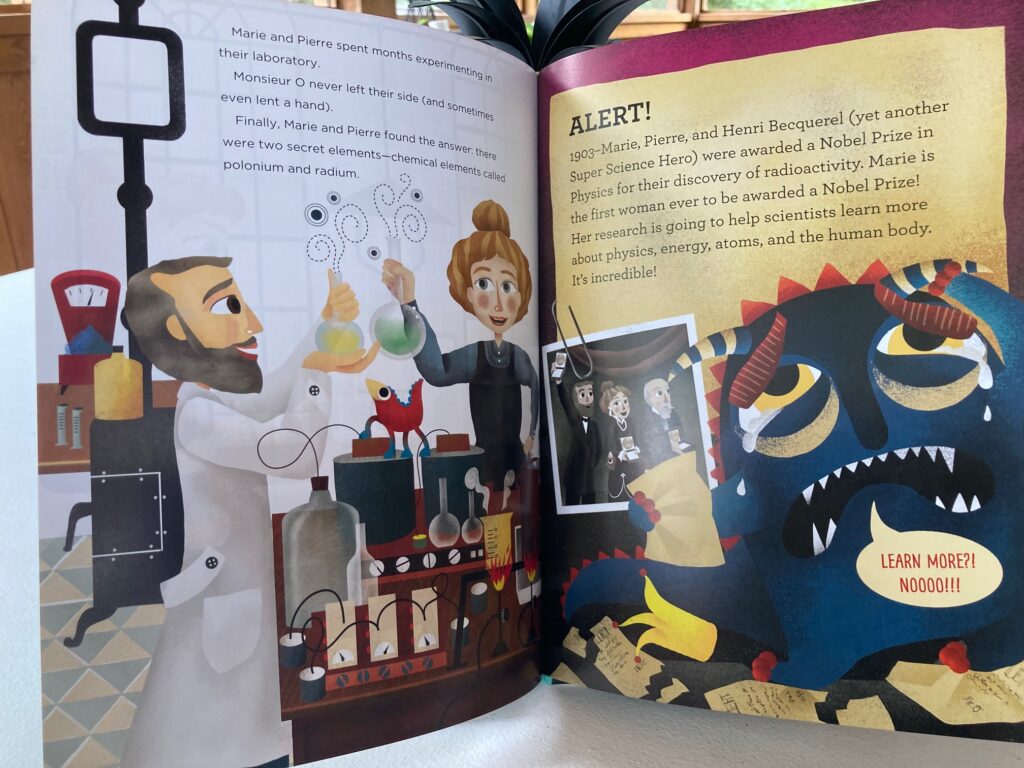
Readers are introduced to the Super Evil Nemesis on the first page. It’s a cartoonish-looking dragon-troll-type creature whose goal is to thwart the spread of knowledge so that it can take over the world. It has four other associates that do its bidding as they distract and lay seeds of doubt around the humans who are attempting to do something wonderful in science.
When Curie is a young girl we see one of the monsters, this one is called. Mr. O, is trying to slow her progress by saying “No, you can’t”. As Curie gets older she tries to get into university, but a well-dressed Mr. O is telling her that universities are only for men. On the very next page, young readers will be able to see Super Evil Nemesis keeping tabs on Mr. O and realizing that it’s going very poorly for them. They’ve also been given a bad guy alert that lets them know that Maria and her sisters attend the Floating University, a secret, underground school.
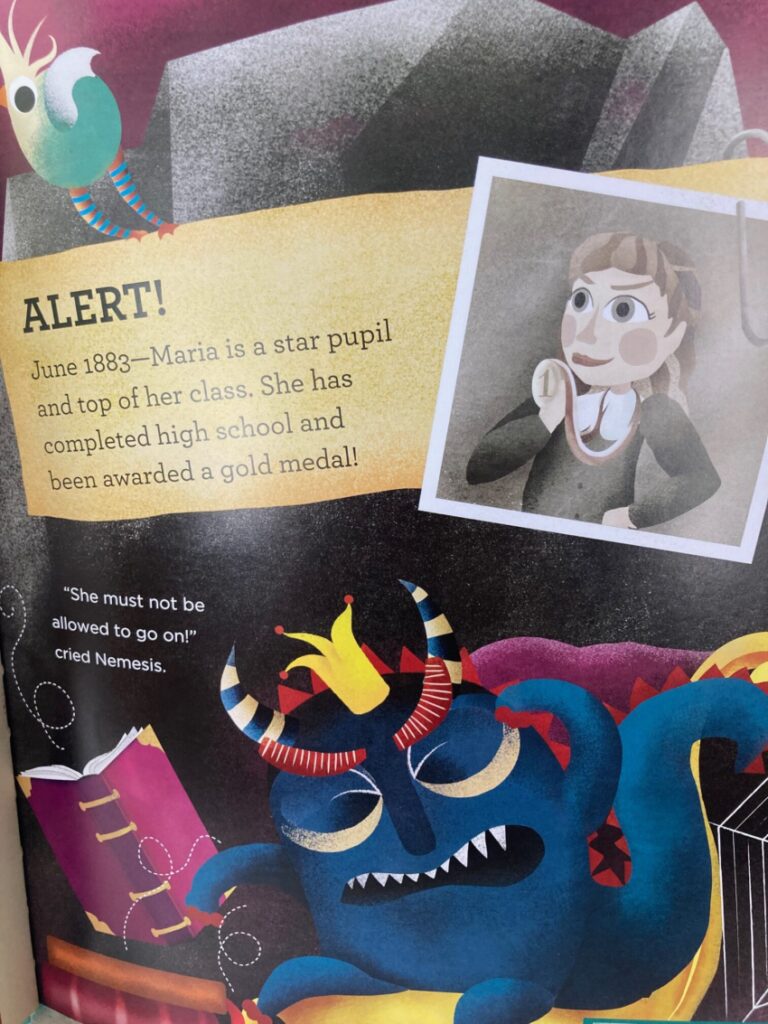
When that school ended, the two sisters knew that they still had to learn more. They decided that Maria would work as an au pair, while her sister went to Paris to continue her studies. Teaching and being an au pair didn’t pay too much and it took her seven years to save up enough money to afford tuition at the University of Sorbonne to study math, physics, and chemistry. School was rewarding for Marie, she loved the challenges and was granted the opportunity to study the properties of steel from school.
It was shortly after that she met Pierre Curie, who was a fellow scientist and provided the famous surname that one associates with Marie. Around that time a German physicist discovered X-rays and Marie started experimenting with them. She quickly realized that these rays were a form of energy. She also realized that some of them were more powerful than others and that some were even radioactive. It was her discovery of the latter that earned her the Nobel Prize in Physics in 1903.
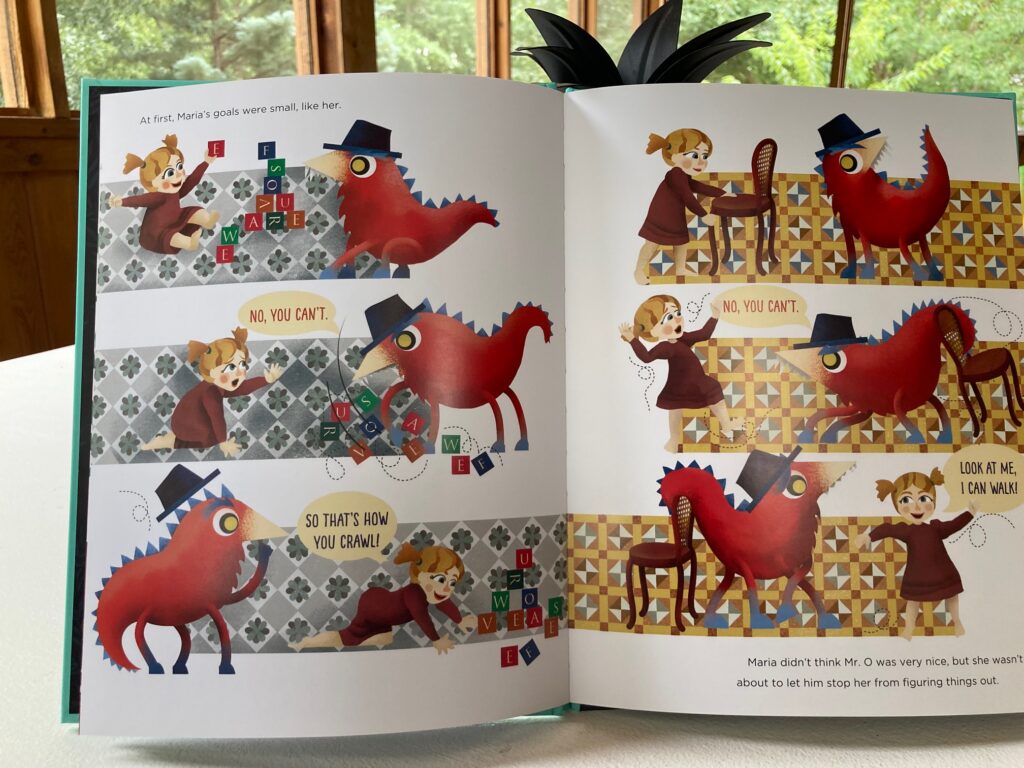
Even after that Marie Curie went on to do amazing things. She won a second Nobel Prize in 1911, it was for her work in chemistry this time, became the first woman professor at the University of Sorbonne in Paris, and many other accomplishments.
As this illustrated book tells the tale, she also conquered Mr. O. Just like we all have an El Guapo in our life, we also have a Mr. O, don’t we? It’s that nagging, negative Nellie who’s always telling us that we can’t, it won’t or you’ll fail in an effort to sabotage what we’re capable of doing. Had Marie Curie and the Power of Persistence been a traditional illustrated book it could’ve worked, but it would’ve simply connected the dots.
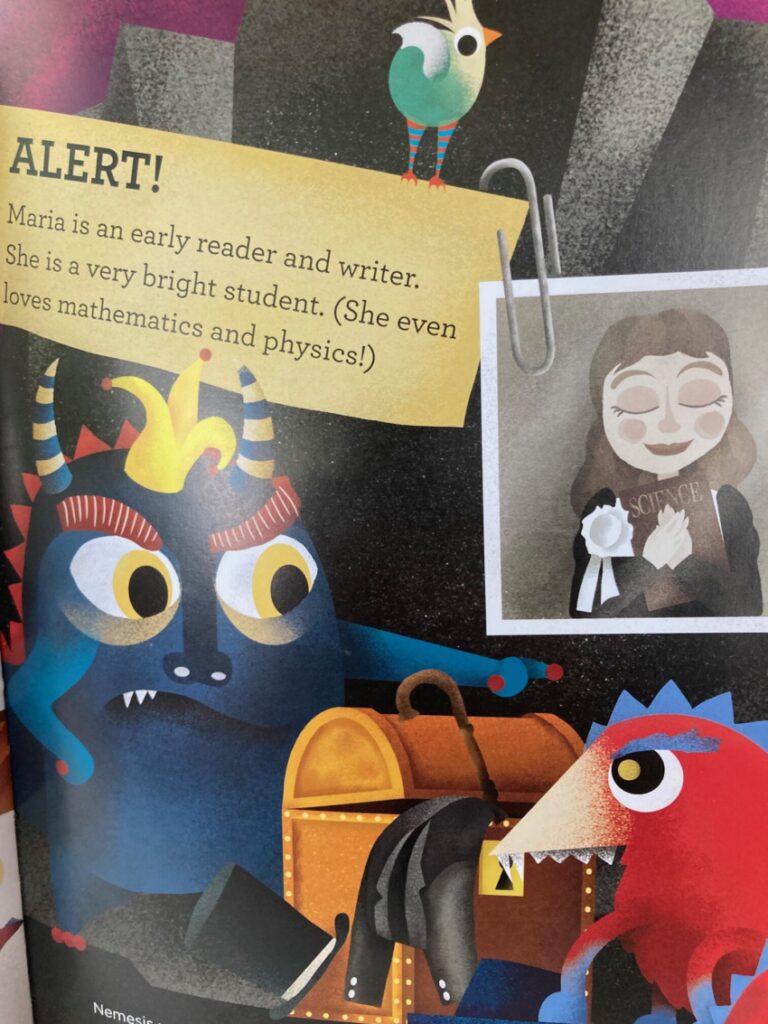
As this book presents things, with a fictional monster pulling the strings that are behind life’s struggles, it adds a level of age-appropriate playfulness. Young readers would’ve been much less likely to jump into a book about Marie Curie, but when you put monsters, who are acting like metaphors, then the book becomes really entertaining. It’s not Jane Austin meets Vampires, because at its heart Marie Curie and the Power of Persistence is still non-fiction. However, the My Super Science Heroes has them confronting that negative Macguffin, which makes the book more apt to engage reluctant readers due to its action. Because even if those elementary-aged kids haven’t seen The Three Amigos and don’t know about El Guapo, they know that everyone, even scientists who changed the world have doubts and difficulties. This is just the right amount of silly that’s combined with non-fiction science and life lessons that’ll let elementary school ages know that they can do great, amazing things, but it won’t happen overnight.
My Super Science Heroes, Marie Curie and the Power of Persistence is by Karla Valenti with Michaela Crespo Quesada, PhD, with illustrations by Annalisa Beghelli and is available on Sourcebooks Kids.
There are affiliate links in this post.

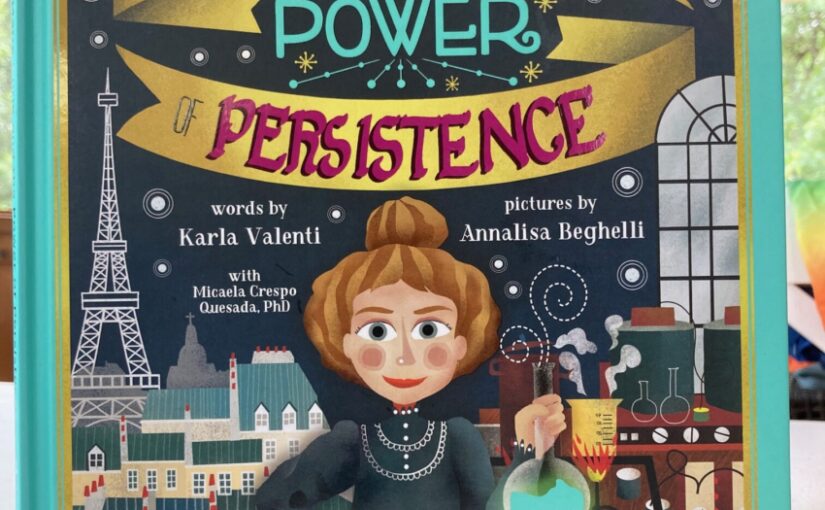
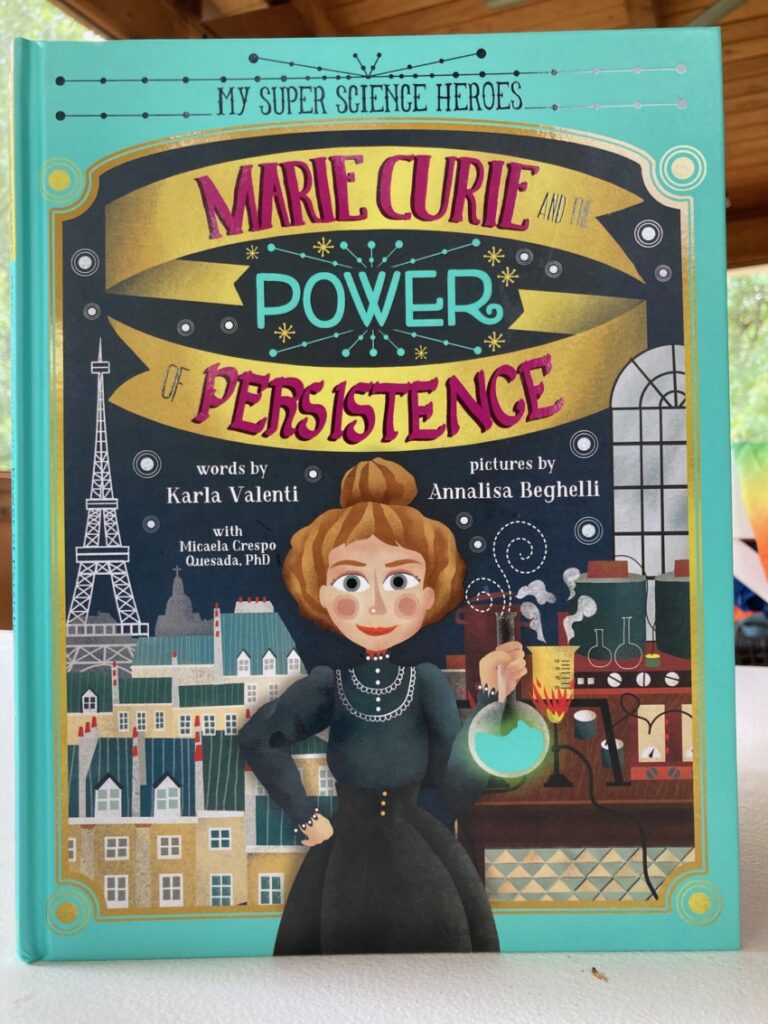



 Facebook
Facebook Twitter
Twitter Flickr
Flickr GooglePlus
GooglePlus Youtube
Youtube